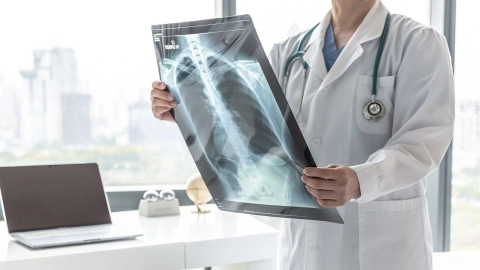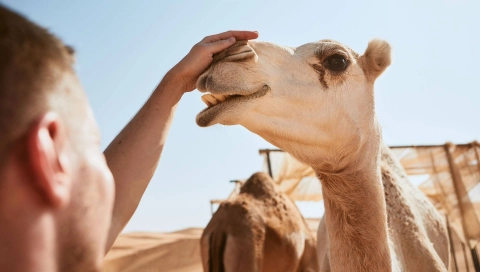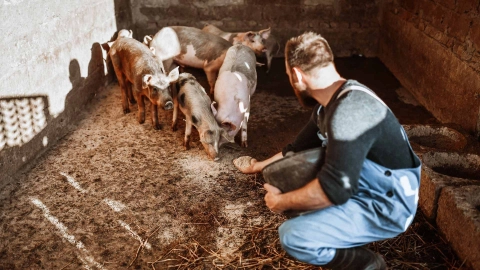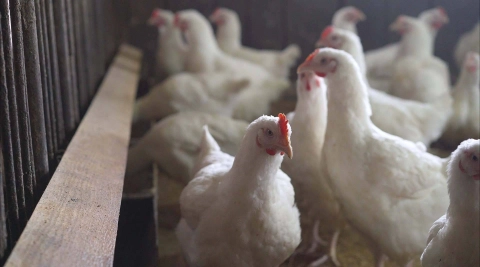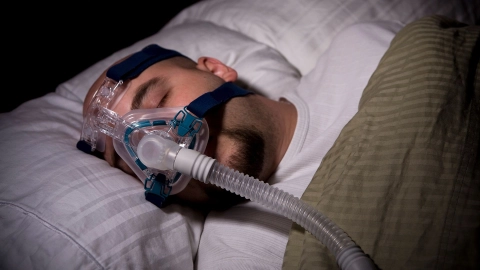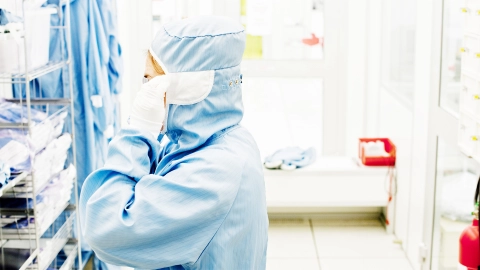An allergy occurs when the immune system has an overly sensitive reaction to a harmless substance such as plant pollen. There are various ways to treat an allergy.
Find out more
Lung cancer is one of the most common types of cancer. Around 57,000 people get lung cancer every year in Germany.
Find out more
With acute bronchitis, the lower airways (bronchi) become temporarily inflamed. Initially, there is a dry cough but phlegm may later be coughed up from the airways.
Find out more
A persistent cough is the most obvious outward sign of COPD. It develops slowly over many years, as symptoms worsen. COPD commonly affects people who smoke or who have smoked in the past.
Find out more
Asthma is a condition that causes a narrowing of the airways. An asthma attack can make it difficult to breathe. Asthma can be treated effectively with medication.
Find out more
Pneumonia typically brings on a sudden high fever, coughing and breathlessness. People without any pre-existing conditions normally recover after a few weeks.
Find out more
Many children and adults are affected by hay fever in the spring and summer months, when plants grow and bloom. It is caused by an allergic reaction to pollen in the air, affecting the upper airways.
Find out more
MERS is a viral infection of the respiratory tract, which occurs predominantly on the Arabian Peninsula. The virus is mainly transmitted from dromedary camels to humans.
Find out more
SARS is an infectious disease of the lungs, which is caused by the SARS-CoV coronavirus. The virus first appeared at the end of 2002 and spread to more than 30 countries until the middle of 2003.
Find out more
Tuberculosis (TB) is a bacterial infectious disease most commonly affecting the lungs. It is relatively rare in Germany.
Find out more
Inflammation of the epiglottis is usually caused by bacteria. Immediate treatment is required, as it can cause acute respiratory (breathing) distress.
Find out more
Swine flu is a type of flu in pigs. On exceptions, it can be transmitted to humans. The 2009 flu pandemic is also referred to colloquially as the swine flu pandemic.
Find out more
Bird flu (avian influenza) primarily affects birds. It can also be transmitted to humans and other mammals. Infection is rare but often has severe symptoms.
Find out more
People with obstructive sleep apnea (OSA) have breathing difficulties while sleeping and have their breathing interrupted – usually without noticing it. So sufferers are very sleepy during the day.
Find out more
False croup is a condition of the airways. It usually occurs in small children. Typical symptoms include a barking cough, a rasping sound when breathing in, and a slight shortness of breath.
Find out more
Anthrax is a rare disease. It is transmitted from animals to humans. Certain occupational groups are at an increased risk of contracting the disease. Read more about symptoms, causes, and treatment.
Find out more
Many people confuse the flu with the common cold. Despite having similar symptoms, these two infections may develop differently. Flu begins suddenly, causing the sufferer to quickly feel very unwell.
Find out more
The first signs of a common colds are often sneezing and a sore throat. If rhinitis has fully kicked in, many people feel weak and ill.
Find out more
In an animal allergy it is not the fur that causes a reaction, but proteins that are found in the animal’s saliva, for instance. Avoiding contact with the animal can help, as can taking medication.
Find out more
Legionnaires’ disease is a respiratory disease caused by bacteria. It may or may not be accompanied by pneumonia. Infection results from water systems contaminated with Legionella bacteria.
Find out more
Whooping cough is a highly contagious disease triggered by bacteria. The disease can put severe stress on the body and lasts a long time.
Find out more
Hantaviruses cause a flu-like illness with fever. The kidneys are often also affected. Rodents such as rats and mice and their excretions are carriers of the virus.
Find out more
In dust mite allergies, it isn’t the dust itself that causes the symptoms. Instead, the symptoms such as sneezing are triggered by substances that are mainly found in the dust mites’ feces.
Find out more
Medication can also have undesired effects. These side effects include allergic reactions. When this happens, the immune system reacts to ingredients found in the medication.
Find out more
The plague is a highly contagious infectious disease, which can be cured by prompt treatment with antibiotics. It still occurs in rare cases in tropical and sub-tropical regions.
Find out more
A pulmonary embolism is when a blood vessel supplying blood to a lung gets blocked. This kind of blockage is an emergency as it can be life-threatening.
Find out more
Acidosis is a condition in which the body’s pH balance is disrupted. As a result, the pH value of the blood drops and becomes “acidic”. This acidity is usually due to an underlying illness.
Find out more
Pleural effusion is a build-up of fluid in the pleural space, i.e. the area between the lungs and the chest wall. Shortness of breath and chest pain are typical signs.
Find out more
Cystic fibrosis is a rare, congenital metabolic disorder that cannot be cured. Treatments can help improve patients’ quality of life and life expectancy.
Find out more





